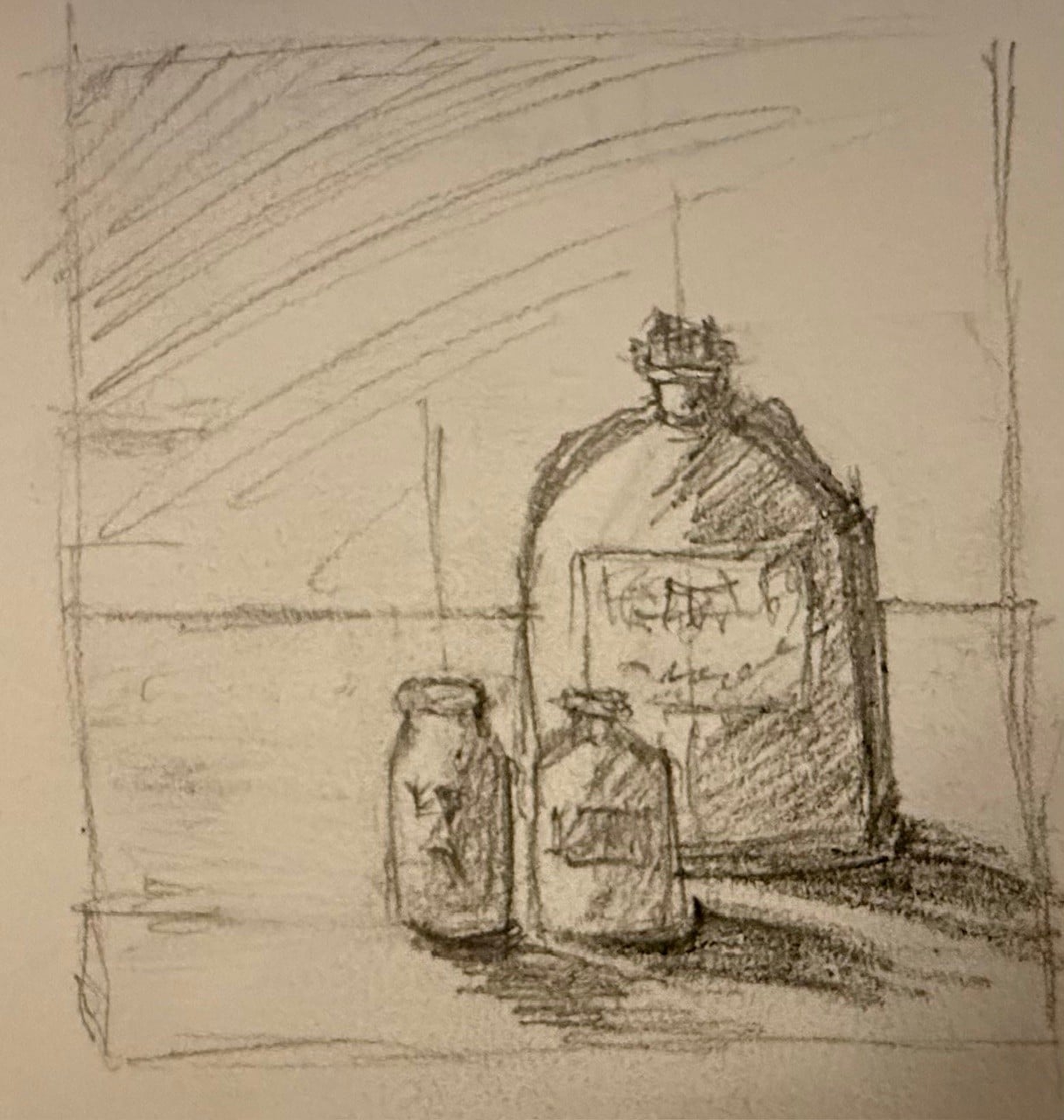Before a single brushstroke touches the final surface, the painter quietly constructs a foundation—an invisible framework of value and design that holds the entire work together. These early drawings, called value and compositional sketches, are not mere preliminaries; they are the architect’s blueprints of vision. I do not set up a still life for photography or begin painting until I have noodled out compositional ideas and value sketches.
🩶 What Are Compositional Sketches?
A compositional sketch is a quick drawing—often in pencil, charcoal, or digital gray scale—used to plan the placement of shapes, balance of space, and flow of movement within a painting.
It’s the stage where the artist answers questions like:
- Where should the viewer’s eye enter and travel?
- How do large shapes balance against small accents?
- Does the design feel stable, dynamic, or off-balance?
By stripping away color, we can focus purely on arrangement—the bones beneath the skin of the painting. Additionally, we can play with the compositional geometry in a sketch a lot easier than in a still life set up.
⚫ What Are Value Sketches?
A value sketch studies the lightness and darkness of those shapes. Painters often create small “thumbnail” blocks of tone—three to five simple levels of gray—to explore how light defines form and mood.
Value sketches reveal whether a composition will read clearly from a distance or fall into confusion. The painter learns how light guides emotion: high contrast evokes drama and tension; subtle midtones suggest calm and atmosphere.
🖋️ Why Do Them?
- Clarity Before Color – Value establishes readability. If a painting works in black and white, it will sing in color.
- Confidence – When you’ve tested several arrangements, your final work proceeds with purpose rather than guesswork.
- Discovery – Quick sketches free you to experiment with daring crops, diagonals, or negative space without fear of “ruining” anything.
- Speed – A few minutes of sketching can prevent hours of repainting later.
Even the masters—Michelangelo, Corot, Sargent—filled entire notebooks with compositional trials before committing to canvas.
🌤️ How They Relate to Painting
A value study translates directly into brushwork: dark masses become mixtures of pigment; highlights emerge from reserved paper or added light paint.
When the painter begins, every decision of edge, tone, and rhythm has already been rehearsed. The painting becomes performance rather than search.
Color then joins this structure like music set to a pre-written score—the harmony of value ensures that hues, no matter how bold, never collapse the design.
🪶 How to Begin
- Use a small sketchbook—no larger than a postcard.
- Limit yourself to three values: light, middle, dark.
- Start with simple shapes, not details.
- Do several versions—change horizon, lighting, or focal point.
- Choose the one that feels balanced even when squinting.
When you later lay in watercolor or oil, you’ll already know where your light lives and how your viewer will travel through the painting.
✨ Closing Thought
Value and composition sketches are a painter’s quiet rehearsal—proof that great art begins in simplicity. They transform uncertainty into design, color into light, and impulse into intention.
To skip them is to walk onto the stage without a script; to practice them is to build the unseen geometry that lets your painting breathe and shine.



